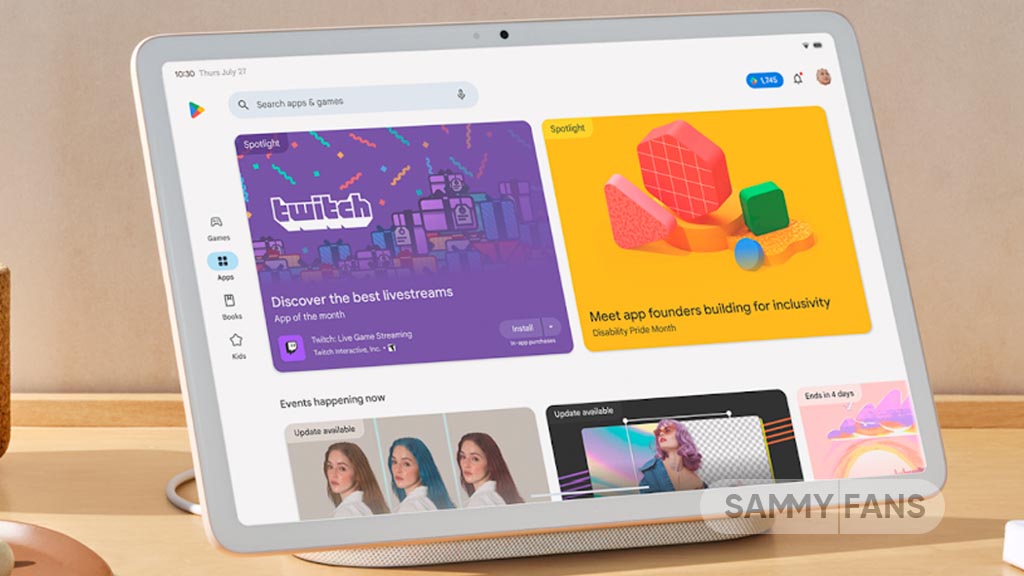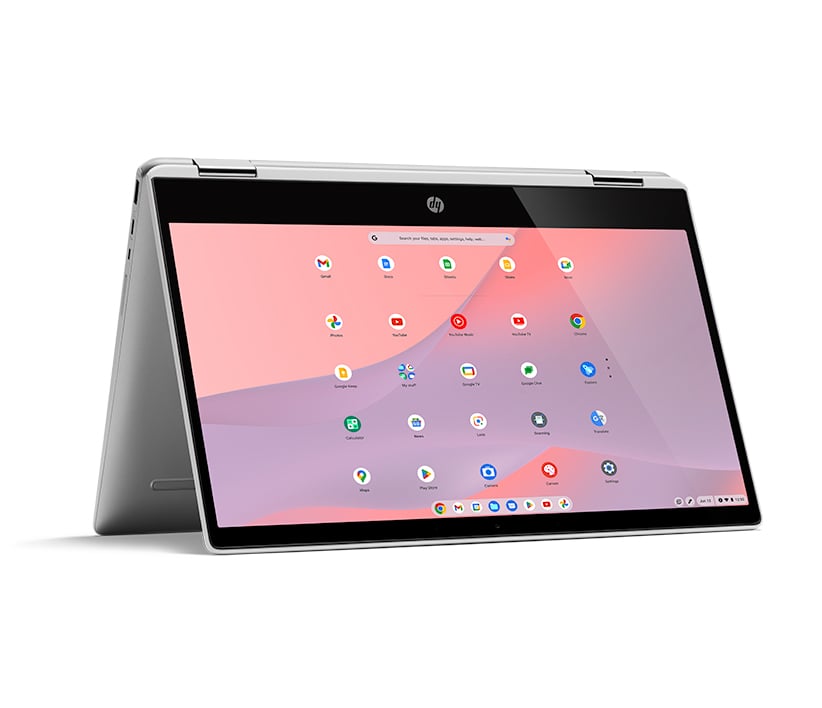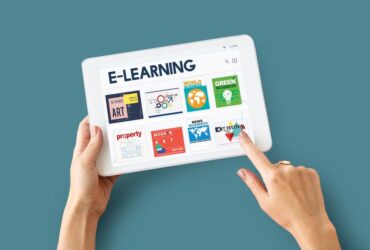E-learning applications usually use a variety of devices, including laptops, desktops, tablets, and smartphones. These devices must have internet connectivity, a browser, and the appropriate software to access e-learning materials.
E-learning has become increasingly popular due to its flexibility and convenience, allowing learners to access educational materials and resources from anywhere in the world at any time. With the outbreak of the COVID-19 pandemic, e-learning has become an essential tool for schools, colleges, and universities globally.
This has resulted in a surge of demand for e-learning devices, including tablets and laptops that are specifically designed for educational purposes. The widespread adoption of e-learning has transformed the education sector, offering students and educators unparalleled opportunities to learn and teach in innovative ways. Partnering with an e-learning software development company can ensure that institutions leverage cutting-edge technology to create user-friendly and engaging platforms.

Credit: www.sammyfans.com
Devices Used In E-learning
E-Learning applications usually use a variety of devices such as computers, laptops, tablets, and smartphones to deliver educational content. These devices have user-friendly interfaces that allow learners to access digital content and participate in interactive learning activities from anywhere at any time.
Additionally, e-learning applications may also utilize special devices like voice synthesizers for users with visual impairments.
Hardware Devices
Hardware devices play a vital role in e-learning applications. These devices include computers, laptops, and tablets that are used for accessing the online learning material and resources. With tablets Black Friday deals just around the corner, this is a great time to invest in affordable, high-performance tablets ideal for
e-learning. A computer with a good processor, adequate memory, and good storage is ideal for e-learning applications.
Software Devices
Software devices refer to the applications and programs that are used in e-learning. These include learning management systems (LMS), online course creation tools, video conferencing applications, and e-book readers. The choice of software device depends on the type of e-learning course and the level of interactivity required.
Mobile Devices
A wide range of mobile devices such as smartphones, tablets, and e-readers are used for e-learning. To accommodate the increasing use of smartphones for learning, educational institutions are investing in an e-learning mobile app development company to create responsive, device-specific applications. The advantage of using mobile devices is that learners can access the learning material anytime, anywhere. Responsive web design and mobile applications that optimize e-learning content for small screens are ideal for mobile devices.
Input And Output Devices
Input devices such as keyboards, mice, and touchpads are used for interacting with the e-learning application. Output devices such as monitors, headphones, and speakers are used for viewing and listening to the learning material. These devices must be user-friendly to ensure that learners can navigate the e-learning application easily.
Voice Synthesizers
Voice synthesizers are used to help users with visual impairment read digital content. E-learning applications usually use voice synthesizers to improve the accessibility of the learning material. The voice synthesizers should have high-quality text-to-speech capabilities to ensure that learners can understand the content clearly.
Projectors
Projectors are commonly used in classrooms and conference rooms to deliver presentations. They are also used in e-learning applications for group activities and collaborative learning. The projectors must have high resolution and brightness settings to ensure that learners can view the learning material clearly.
In conclusion, a wide range of devices such as hardware, software, mobile devices, input and output devices, voice synthesizers, and projectors are used in e-learning applications. The choice of device depends on the type of e-learning course, the level of interactivity required, and the needs of the learners.

Credit: www.linkedin.com
Most Suitable Device For A Classroom
The most suitable device for a classroom largely depends on the curriculum. For web-based tasks, Chromebooks are cost-effective and work well. For more complex tasks such as coding and graphic design, computers with powerful processors and dedicated graphics are the way to go.
Ensure they have adequate ports for peripherals and are compatible with educational software.
Considerations For Choosing A Device
Choosing a device for e-learning applications can be quite overwhelming considering the various options available. Here are some key factors to consider when choosing a device for your classroom:
Chromebooks
Chromebooks are popular because they are cost-effective and work well for web-based tasks. They are great for online research, taking online tests, and accessing educational software from the cloud. Additionally, they come with Google Drive which allows students to store and access their documents and presentations from anywhere with an internet connection.
Computers With Powerful Processors
If your curriculum involves coding or graphic design, then choosing a computer with a powerful processor and dedicated graphics card is essential. Computers with powerful processors tend to offer faster processing speeds, multitasking capabilities, and improved graphics rendering, making them ideal for tasks that require a lot of processing power.
Presentation Display Systems
Using presentation display systems such as projectors, wireless presentation displays, and interactive-flat panel displays can help create a more collaborative and engaging meeting space, making them ideal for classrooms and conference rooms. They allow you to display high-quality visuals in an engaging and interactive way, providing students with an immersive learning experience.
In conclusion, choosing a suitable device for e-learning applications involves considering the specific needs of your curriculum, the software required and the kind of learning experience you want to create. Whether it’s a Chromebook, a computer with a powerful processor, or a presentation display system, it is important to choose a solution that is compatible with your educational environment and software requirements.
Storage Devices For Transferring Files
E-Learning applications commonly use storage devices such as USB flash drives or cloud-based storage to transfer files. For users with visual impairments, voice synthesizers are often used to enable them to read digital content.
Usb Flash Drives
USB flash drives are commonly used storage devices for transferring files in e-learning applications. These devices are small, portable, and have a large storage capacity, making them ideal for transferring multimedia files such as videos, images, and audio recordings. USB flash drives are also compatible with most devices, including laptops, desktops, and mobile devices, making them a versatile choice for transferring files.
External Hard Drives
External hard drives are another popular storage device used in e-learning applications. They are larger than USB flash drives and have a much larger storage capacity, making them ideal for storing large educational resources such as multimedia courses, textbooks, and lecture recordings. External hard drives are also a good choice for students who need to transfer files between multiple devices that may not be in close proximity to each other.
Cloud Storage
Cloud storage is becoming increasingly popular in e-learning applications. It allows students to store files remotely on a server rather than on their personal device or physical storage device. Cloud storage has the advantage of being easily accessible and shareable from any device that has an internet connection. Popular cloud storage options include Google Drive, Dropbox, and Microsoft OneDrive.
In conclusion, the choice of storage device for transferring files in e-learning applications will depend on the nature of the educational materials being transferred and the students’ preferences. However, USB flash drives, external hard drives, and cloud storage are the most commonly used storage devices, offering flexibility, accessibility, and convenience in transferring digital educational content.
Accessibility For Users With Visual Impairments
E-learning applications often use voice synthesizers as a device to aid users with visual impairments in reading digital content. These synthesizers offer a spoken form of digital content that can be easily understood by visually impaired users, improving accessibility and usability.
HTML Syntax:
Use Of Voice Synthesizers
E-learning applications have come a long way in terms of accessibility for users with visual impairments. One of the most prominent and helpful tools are voice synthesizers, which are used within e-learning applications to read digital content aloud for visually impaired users. This tool not only enables users to access the content but also makes it more engaging and interactive by adding a human element to the learning experience. Most e-learning platforms offer built-in voice synthesizers, which make them more user-friendly for visually challenged students.
Other Devices For Visually Impaired Users
As the demand for accessibility in e-learning platforms increases, developers are exploring other devices that aid visually impaired users. Some of the devices include screen readers, Braille displays, magnifiers, and other assistive technologies that help users access digital content. Screen readers, for example, convert the on-screen text to speech, while Braille displays enable users to read through a tactile interface. These devices are not just limited to specialized e-learning platforms but can be integrated into mainstream applications too, making them more accessible for everyone.
Moreover, these devices can not only help students with visual impairments but can also improve the overall user experience for all learners. For example, the use of voice synthesizers can help auditory learners better retain information, while the use of visual aids and Braille displays can aid tactile and kinesthetic learners.
| Top Classroom Computers | |
|---|---|
| 1 | Chromebooks are cost-effective and work well for web-based tasks. |
| 2 | For coding or graphic design, opt for computers with powerful processors and dedicated graphics. |
| 3 | Ensure they have adequate ports for peripherals and are compatible with educational software. |
In conclusion, e-learning applications have become more accessible than ever before, thanks to the implementation of various assistive technologies, such as voice synthesizers and other devices for visually impaired users. As the education landscape continues to evolve, it is essential for developers and educators to work together to create a more inclusive learning experience for all.
Credit: www.google.com
Frequently Asked Questions On What Device Do E-learning Applications Usually Use
What Device Do E Learning Applications Usually Use To Help Users With Visual Impairment Read Digital Content?
E-learning applications usually use a voice synthesizer device to help users with visual impairment read digital content.
Which Is The Most Suitable Device To Use In A Classroom?
Chromebooks are cost-effective and work well for web-based tasks. If your curriculum involves coding or graphic design, opt for computers with powerful processors and dedicated graphics. Ensure they have adequate ports for peripherals and are compatible with educational software. Using presentation display systems such as projectors, wireless presentation displays, and interactive flat-panel displays are the best solutions to consider if you want to create a more collaborative and engaging meeting space.
Which Is The Most Suitable Device To Use In A Classroom Or A Conference Room To Deliver Presentation?
The most suitable devices for delivering presentations in a classroom or conference room are projectors, wireless presentation displays, and interactive flat-panel displays. These solutions create a collaborative and engaging meeting space.
What Is The Most Common Type Of Storage Device For Transferring Files?
The most common type of storage device for transferring files from one computer to another is a USB flash drive.
What Types Of Devices Are Commonly Used For E-learning Applications?
E-learning applications can be accessed through a variety of devices, including computers, tablets, and smartphones.
Conclusion
E-learning applications have revolutionized the education industry, and it is fascinating to know that these applications are designed to work on several devices. From smartphones and tablets to laptops and desktops, a wide range of devices can host e-learning applications to help users access educational content smoothly.
E-learning applications usually use visual synthesizers to help users with visual impairment read digital content with ease. So, whether you are a student or a working professional, using these devices to access e-learning applications can indeed make a positive impact on your learning curve.












































Leave a Reply